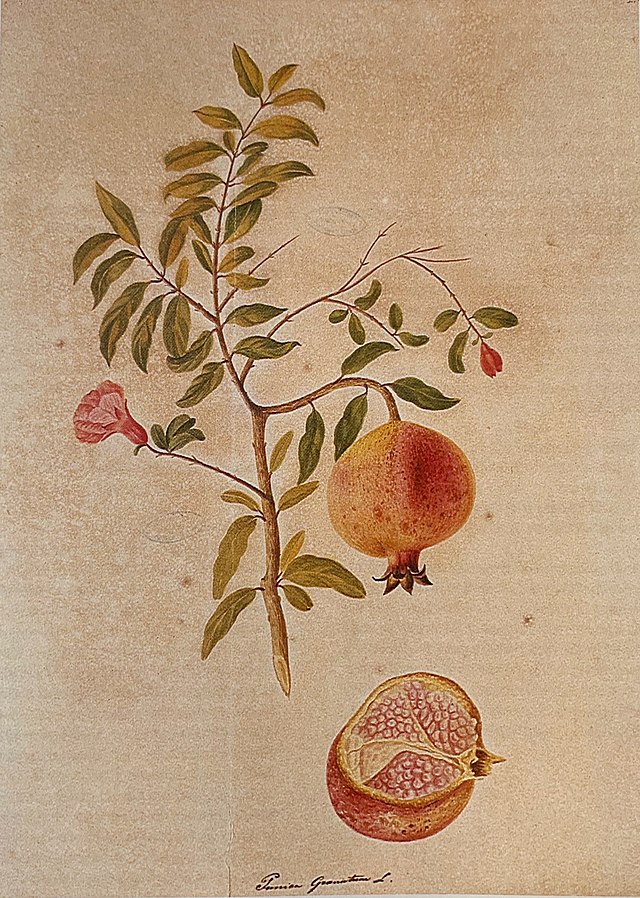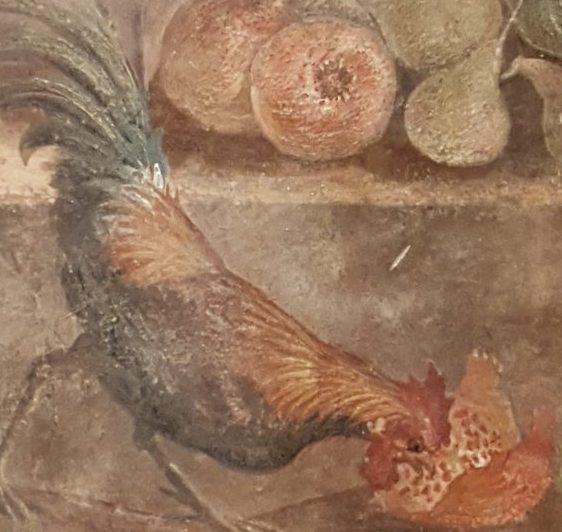
Native to Iran and Iraq, the pomegranate is a deciduous tree or shrub and a member of the loostrife family, Lythraceae, that also includes crepe myrtle, henna, and Cuphea. It has been grown since ancient times and is widely cultivated for the juicy seeds of its fruit in places with warm dry climates including the area around the Mediterranean. The pomegranate was important in Greek mythology (recall the myth of Hades and Persephone), and Greek colonists probably brought the plant to the southern part of the Italian peninsula where images of the plant can be seen in frescoes at Paestum. Frescoes from Pompeii also show the fruit. The ancient naturalist, Pliny the Elder (d. 79 AD), calls the plant “Punic apple” and identifies 9 varieties. He notes that 3 varieties are especially valued for tanning, as a component in medicine, and as a source for purple dye.

Description: Growing up to 33′ tall the plants have fine-textured leaves that are glossy green and narrow oblong. Showy red-orange flowers are borne singly or in clusters of up to five from mid spring to early summer. In the fall, the foliage takes on a reddish or bright yellow tint as the large almost spherical fruits appear. The fruits are 2 to 4.” across and have a tough, leathery, pink to red skin and an interior divided into hundreds of segments by thick, cream-colored membranes. The segments are filled with a seed surrounded by a sac of tart juice. The plants are are extremely long-lived, up to 200 years old, and are grown as ornamentals as well as for fruit.
Size: 10-33’H x 8-15’ W
Light: Full sun
Soil: Deep loam, medium moist, well-drained, pH 6.5-7 but tolerate less; drought tolerant
Hardiness: Zones 7-11 (but may not produce fruit in colder areas)